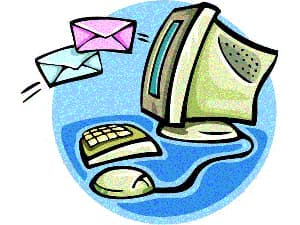According to a new survey by GFI Software, email is alive and doing well in small- to mid-sized America.
Some 44 percent of respondents use email over other available channels, such as instant messaging (6 percent), face-to-face (22 percent), and phone (28 percent). They’re also quick to review and respond to email, with 76 percent of respondents replying within an hour of receipt ,and 32 percent within 15 minutes.
Even after the workday is over, email checking is not. Respondents report checking email at school events, weddings, even funerals or when their partner was in labor. (Labor can go on forever, so that’s not as bad as it seems at first blush.)
Some companies are shutting email down
Almost every moment presents an opportunity to focus on what’s at hand or check our phone when it beeps — and even when it doesn’t.
Our inability to ignore email has led some companies to shoulder the responsibility for shutting it down. Atos, an international information technology company, has a zero email policy. The Advisory Board has a no after-hours email checking policy. Other companies ban email on certain days.
These companies are reversing a condition that’s developed over time — intentionally or not — and is part of a larger problem. With each check of our email, we turn away from other tasks and lose our focus. This task-switching is something researcher Gloria Mark studies to understand its impact on productivity:
Surprisingly our results show that interrupted work is performed faster. We offer an interpretation. When people are constantly interrupted, they develop a mode of working faster (and writing less) to compensate for the time they know they will lose by being interrupted. Yet working faster with interruptions has its cost: People in the interrupted conditions experienced a higher workload, more stress, higher frustration, more time pressure, and effort. So interrupted work may be done faster, but at a price.”
Email bans may do for us what we can’t do for ourselves. With creativity, health, and well-being at risk, they may do much for the companies that implemented them as well.
Find the full survey results here.
This was originally published on Fran Melmed’s free-range communication blog.
